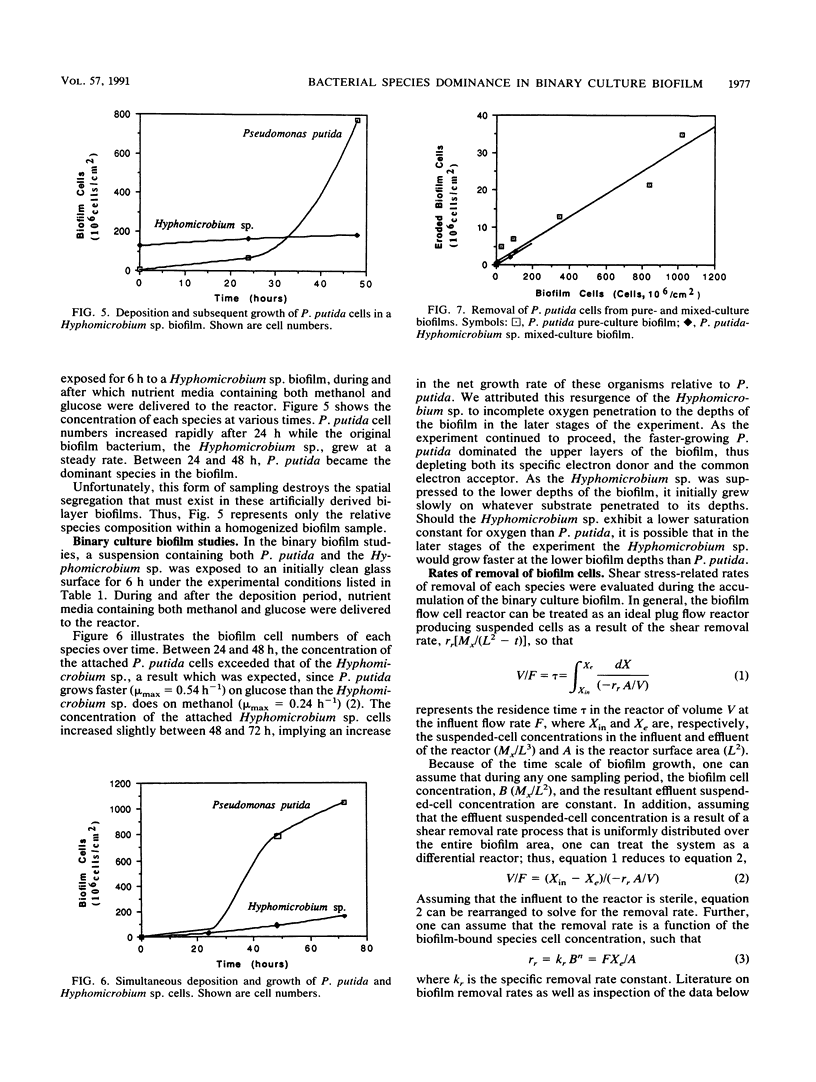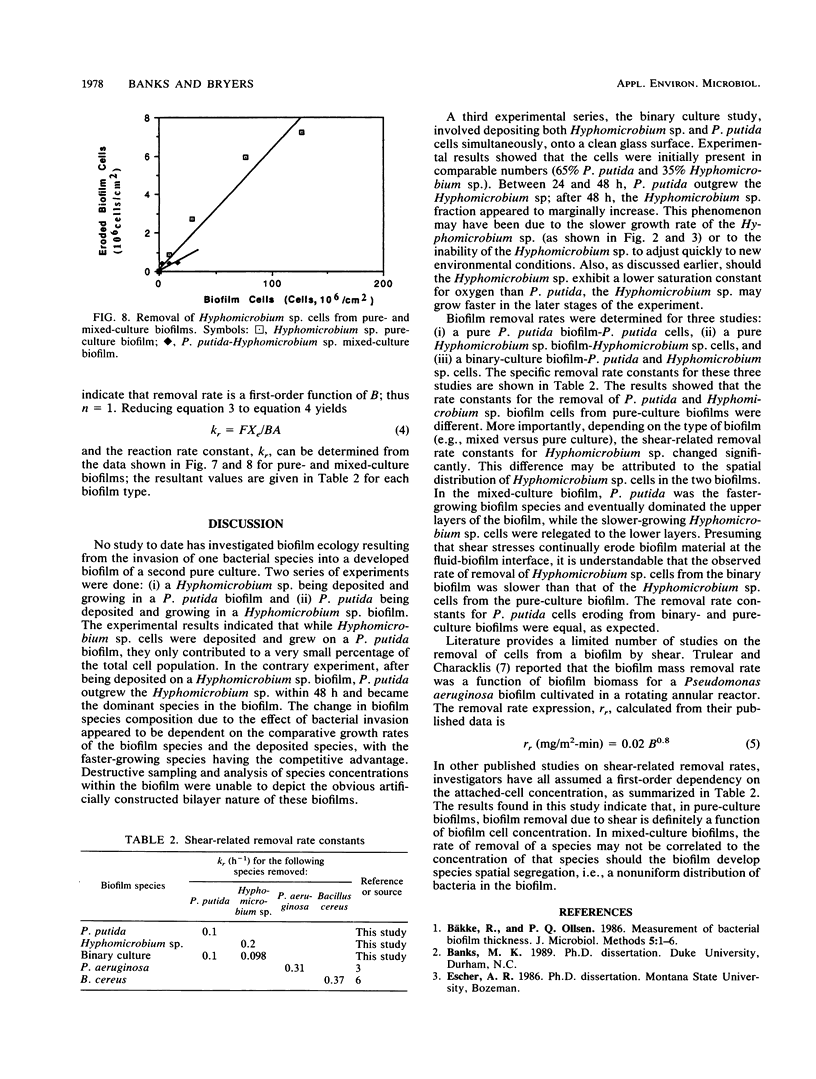Abstract
Studies with two species of bacteria, Pseudomonas putida and Hyphomicrobium sp. strain ZV620, were carried out to evaluate the overall net rate of accumulation of biofilm, the biofilm species composition, and individual species shear-related removal rates. Bacterial cells of either or both species were deposited onto glass or biofilm surfaces to initiate multispecies biofilms. Subsequent biofilm development was carried out under known conditions of nutrient concentration and laminar flow. Establishment of a depositing organism in a biofilm composed of another species was found to be a function of the relative growth rates of the bacterial species. In the case of simultaneous species deposition and subsequent binary culture development, the faster-growing organisms rapidly became the dominant biofilm species, but the slower-growing organisms remained established within the biofilm and continued to increase in numbers over time. The results also indicated that the rate of cell removal by fluid shear for a species was a function of biofilm cell number only if the species concentration was uniform with depth; in essence, only the upper layers of the biofilm were sheared off.
Full text
PDF





Selected References
These references are in PubMed. This may not be the complete list of references from this article.
- Hobbie J. E., Daley R. J., Jasper S. Use of nuclepore filters for counting bacteria by fluorescence microscopy. Appl Environ Microbiol. 1977 May;33(5):1225–1228. doi: 10.1128/aem.33.5.1225-1228.1977. [DOI] [PMC free article] [PubMed] [Google Scholar]


